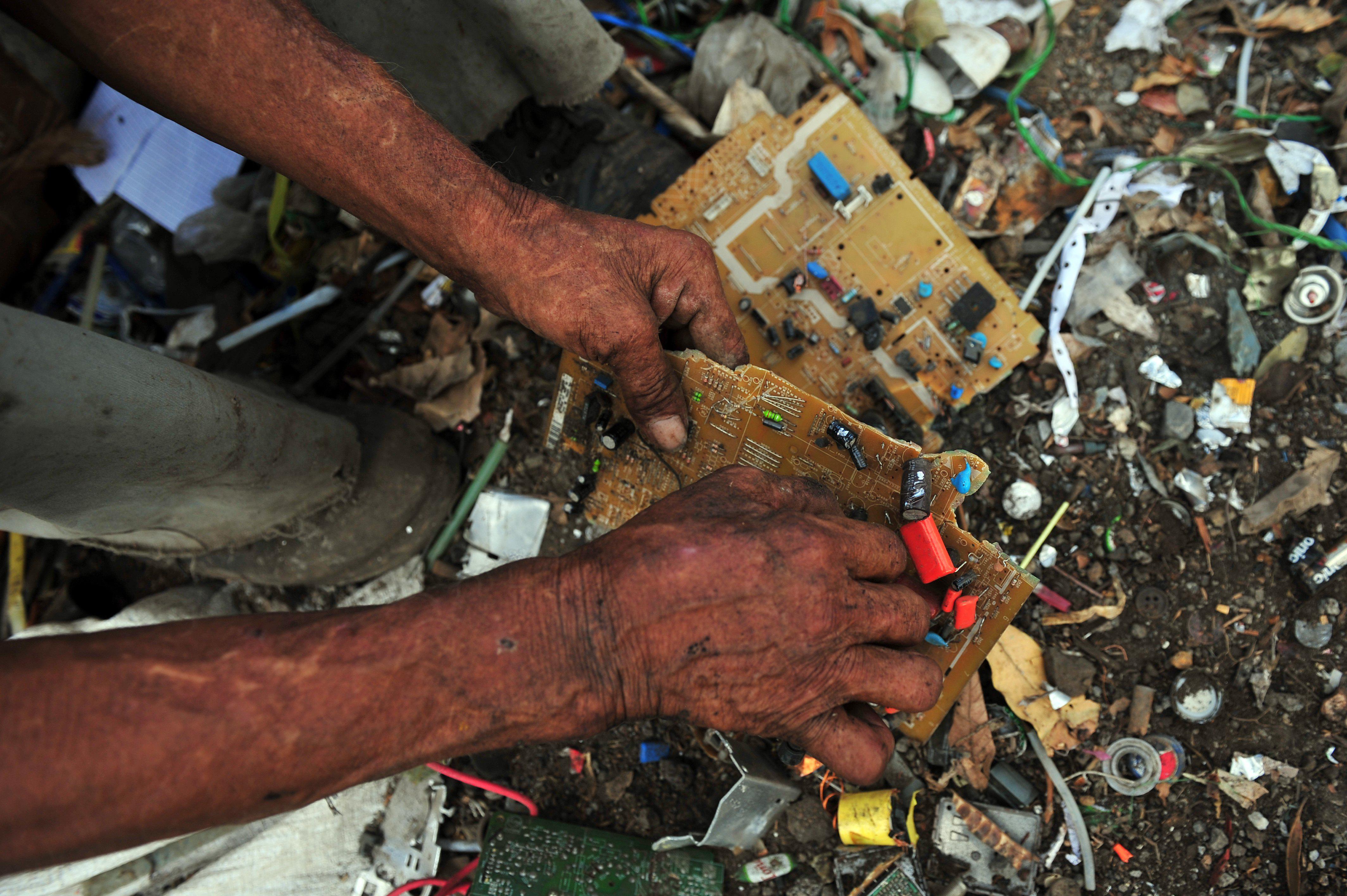Young men sitting in the wreckage of a toxic wasteland, children picking through piles of high-tech rubble, women hunched over coils of tangled copper wiring: These are the faces of e-waste, as we know it.
A few years ago I started visiting tech dumps around the world, because I wanted to see if the horrors I’d read about were true. They are. But I learned that something else in those dumps: I learned that if there is despair in the rubble, there is hope there, too.
When I arrived in Agbogbloshie—a suburb of Accra, Ghana—in 2011, it was already the most notorious e-waste dumpsite in Africa. Two years later, it achieved the grim distinction of being named one of the 10 most polluted places in the world.
Inside the dump, broken and burnt out computer parts were strewn everywhere—the graveyard I expected. But after taking in the chaos, I saw what most don’t: I saw the order. It was a massive disassembly line.
Near the entrance, workers with screwdrivers deftly pulled open computers. They extracted power supplies, circuit boards, and heat sinks—components that would be sold to anyone who’d use them. Farther down the line, jobs got less profitable and more dangerous. Waste pickers tackled components that no one else wanted, burning through the plastic to get at the metal inside.
The materials harvested inside Agbogbloshie usually wind up in the marketplace nearby. If Agbogbloshie’s dump is where electronics go to die, this is where they go to be reborn. Hundreds of booths and workshops line the streets—a never-ceasing hive of industry. On the street, a young man asked if I wanted to buy some refurbished TV remotes. In the U.S., those remote controls would just one more broken luxury for the trash heap. Here they are salvaged, cleaned, and repaired.
There’s a spirit of resourcefulness—born out of scarcity—that dominates every electronics marketplace I’ve been to in India and in Africa. In Kenya, they have a word for it: jua kali—the people who harness their creativity to fix absolutely anything, anywhere, under any conditions. I met one recycler in Pretoria that repaired and resold the same computer four different times. Each time, the computer was sold for a lower price.
Compared with a decade ago, 10 times as many Africans have personal computers, and 100 times as many have mobile phones. Much of that growth has been fueled by importing second-hand computers, mobile phones, and TV sets from developed countries. The catch is that used electronics need upgrades and maintenance. Until e-waste recycling centers become more widespread (such programs are just getting off the ground in East Africa), the best shot we have of keeping the old electronics already in Africa out of dumps is to keep those electronics working for as long as possible. I wanted to help grow the army of repairmen and women who make the “trash” new again.
In February, my organization iFixit teamed up with Microsoft to host what I hope will be the first of many repair-business workshops. Twenty-four students, including three women, signed up for the course at the Pan Africa Christian University in Nairobi, Kenya—many of the students busing in from outside of the city to earn a certificate in repair.
During the intensive workshop, we introduced the attendees to iFixit’s catalog of repair manuals, showed them how to repair cellphones and laptops, and taught them how to salvage replacement parts from broken devices. We walked them through ESD safety techniques and shared some of our experiences carefully extracting glued-in batteries.
Then came the test: At the end of the two days, we sat the students down with a pile of cellphones that been used, abused, abandoned. Those devices were written off as unrepairable (some of components where covered in a toothpaste-like layer of corrosion). Still, a handful of students managed to strip down the phones, clean off the corrosion, swap out some parts, and get them working again—a testament to what people can accomplish with a little bit of knowledge and a lot of resolve. Jua kali strikes again.
If we are going to fight e-waste, create jobs, and spread the benefits of technology to the people who can’t afford it, then we’ll need more people like those students. Because, right now, repairmen and women are the last line of defense against e-waste in much of East Africa. And they’ll need support: wider access to repair information, formalized access to replacement parts, and more help from manufacturers of electronics.
Of course, more repair businesses on the ground won’t solve the e-waste problem—not completely. And it won’t reverse the devastating environmental and human consequences of illegal e-waste dumping. But right now, it helps. And that’s something.
If children burning e-waste in open pits are the faces of e-waste, then so too are the repairmen, the refurbishers, and the recyclers who pull their living out of the trash heaps. They transform e-waste into resources. They make trash new again. They take discards, fix them, and put inexpensive technology into the hands of those who need it.
And, in my book, that makes them heroes.
Future Tense is a partner in the Green Electronics Challenge, a competition for makers from the U.S., China, and elsewhere to create something new from electronic waste. For more information and to enter, visit the Green Electronics Challenge website.
